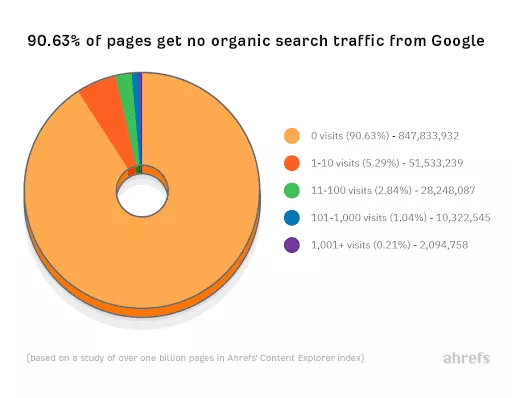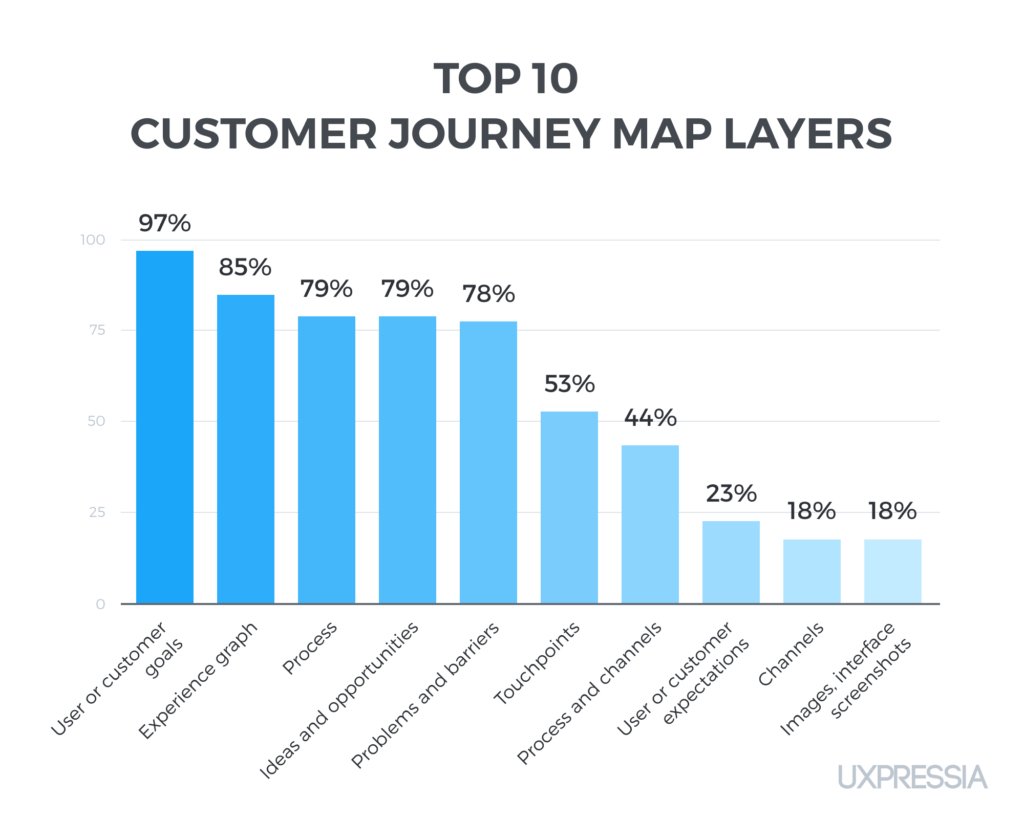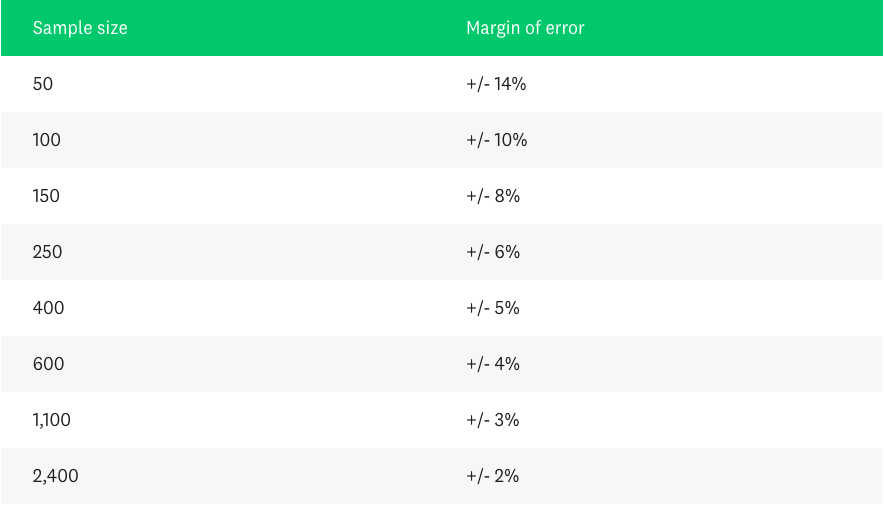Supporting customers and prospects throughout the entire customer journey is pivotal to boosting conversions and developing long-term customer relationships.
But catering to customers at every touchpoint isn’t always straightforward. To truly support your customers and bring value to their lives, you have to find the gap between what they need and the value that you’re bringing to the table.
By identifying the missing pieces and filling in the gaps, you’re not only providing exponential value, but you’re also putting the customer first. An absolute must if you want to outrank your competition.

There are many approaches you can use to meet customer needs throughout their relationship with you. In today’s article, we’re covering one of the most effective.
It’s called conducting a content gap analysis.
By performing a content gap analysis (and filling in the pieces), you can align with your customer during their journey and beat out your competition in the process.
And luckily for you, we put together the exact steps you need to perform a content gap analysis.
The steps we’re sharing today include:
- Step 1: Identify and set concrete goals
- Step 2: Map out the customer journey
- Step 3: Conduct market research
- Step 4: Audit your current content
- Step 5: Analyze competitor content
- Step 6: Create a plan to fill in the gaps
- Step 7: Implement your plan
- Step 8: Integrate content gap analysis into your SEO workflow
Before we cover each step, let’s take a closer look at what a content gap analysis is and how it can help you outrank the competition.
What is a content gap analysis?
A content gap analysis plays an integral role in customer-centric marketing.

That’s because the entire analysis process is conducted with the customer in mind.
If you’ve never heard of a content gap analysis, it’s the evaluation of content with the intent to discover gaps that you can improve upon.
For example, we actually conducted a content gap analysis before writing this article. We took a hard look at the SERPs for the key phrase “content gap analysis.”
We then looked for ways to make our article more comprehensive and easier to read than the other ranking pages. We paid extra attention to the steps each article laid out for conducting an analysis, and you know what we found? A lot of missing gaps.
For instance, one article focused on Google analytics, tools, and auditing content, but it never covered goal-setting or journey mapping.

Another was almost comprehensive, but it didn’t stress the importance of integrating a content gap analysis into an SEO workflow. The structure was also hard to follow.
Another article relied heavily on SEO steps but didn’t cover customer experience or journey mapping.
The last article we reviewed had unoptimized headers, poor structure, improper spacing, and missing information.
So what did we do? We filled in these missing gaps to create a well-structured, complete article with all of the information our readers need to succeed.
3 Aspects of a content gap analysis
There are three aspects of a content gap analysis. There’s the customer experience aspect, the competitor aspect, and the SEO aspect.
Here’s a quick breakdown of how each aspect applies:
- Customer experience: Auditing your content to ensure it supports customer needs, is formatted for easy reading, and aligns with the buyer’s journey.
- Competitor: Ensuring that your content includes competitors’ keywords, is more comprehensive, and solves needs better than competitor content.
- SEO: Crafting content with search intent in mind so potential customers can find your content quickly and easily. Every new and current keyword is planned with the target customer in mind. And with the intent to drive valuable, organic traffic.

How can a content gap analysis help me outrank my competition?
A content gap analysis gives you the bird’s eye view you need to identify poor or incomplete content so that you can create something better.
A content gap analysis can help you:
- Improve current content so that it’s optimized and curated with your audience personas in mind
- Add new content based on current gaps (i.e., you haven’t covered fashion tutorials yet, but your top three competitors have)
- Connect deeper with prospects and customers by identifying needs and solving problems
- Support the customer along the customer journey, i.e., answer their questions, educate them, and guide them to purchase
- Meet needs better than the competition
- Support customers better than the competition
- Boost SEO rankings better than the competition
- Identify missed keyword opportunities
This guide on enterprise data warehouses is proof of content gap analysis in action.
In fact, when you type in “enterprise data warehouse guide” on Google, this article shows up in position number one:

If you take a close look at the article, it’s no surprise that it’s ranked in the first position.
Not only is the article optimized for search, but it’s also:
- More comprehensive than competitor articles
- Structured for readability
- Formatted better for skimming and quick reading
- Quality content
That’s the gist of content gap analysis. Now, onto explaining how to conduct a content gap analysis step by step.
Step 1: Identify and set concrete goals
A content gap represents the link between the way your content is performing versus the results you’d like to see.
So, lay everything out on the table. What do you want to accomplish by completing a content gap analysis? What end result are you looking for, and how will you know when you’ve gotten there?
For instance, are you tired of seeing your content rank in positions five or lower? Are you worried that competitor content often covers topics you don’t? Are you looking for more ways to support your customer throughout the whole relationship?

Be concrete with your concerns and what you’d like to achieve as a result.
To do this, we recommend stating your concern, picking a long-term goal, and choosing a few action steps to achieve that goal.
For instance:
Concern: “Our content isn’t ranking high enough. I’m afraid we’ll be left in the dust if we don’t learn how to keep up with/beat our competitors.”
Long-term goal: “I’d like to see us rank in the top three positions. Ranking number one would be the ultimate success for us.”
Action steps to achieve our goal: “I’d like to see…”
- A deeper dive into user intent research before content planning
- More comprehensive articles that answer our customers’ most burning questions and beat competitor content scores by 10%
- More in-depth guides that beat competitor content scores by 30%
- A protocol for updating underperforming content
In the next few sections, we’ll show you how to achieve your goals using a content gap analysis.
Step 2: Map out the customer journey
After understanding what you’d like to achieve through a content gap analysis, take a few days to research and map out the customer journey.
If you’ve already mapped out the customer journey, congrats! You’re almost done with this step. Read on to make sure your map aligns with the details below.
Next, take some time to consider how your content strategy meets customer needs during every stage of their journey. In other words, what existing content do you have readily available for prospects and customers who make contact with your business?
Customer journey maps should have layers, and some are more popular than others. Check out this analysis on the popularity of different layers to inform what you should focus on:

What questions does your website content answer for customers while they’re transitioning from awareness to the decision-making stage? In other words, how does your content guide prospects into becoming customers?
How can you nurture your audience at multiple touchpoints to become purchase-ready? Can you identify additional content opportunities that can support them along the way?
Here’s a visual of what we mean:

Step 3: Conduct market research
Understanding your target audience is crucial to crafting customer-centric content.
To truly understand your target audience, it’s important to know:
- Audience pain points: What’s bugging them? How did other brands fail them? How can you solve their pain points better than the competition?
- Their needs: What are their current needs? How can you meet them better than anyone else?
- What goals they’d like to accomplish: How can your brand help them hit their objectives?
- What purchases they habitually make: How can your brand get on their loyalty list? How can you entice them to buy from you every time?
- More about who they are: How can you personalize your content with them in mind?

Answer these questions by first conducting consumer behavior research. Then go straight to the source: your audience.
Asking your audience
You can ask your audience all of the questions above by conducting surveys, polls, questionnaires, and quizzes.
Take this further by conducting interviews with focus groups that represent your target audience. Then go even further by conducting live interviews with some of your real customers.
Check out SurveyMonkey’s great article to find out exactly how to conduct audience surveys. See below their study of sample sizes and the margin of error you can expect with each.

Use the feedback you collect from these methods to better inform your content strategy to help you convert more leads.
Here are some questions you might consider asking your audience:
- What core benefits and features are you looking for in a product or service?
- What do you purchase most often and why?
- What questions do you have about [insert topics]
- What pain points do you have regarding [insert topics]
- What brands have you tried in the past to solve your pain points? Did they succeed? Why or why not?
- What core benefits and features do you gain from our products and services?
- What additional benefits and features would you like to see our products and services offer?
- What made you become a loyal customer of ours? What did your journey to brand loyalty look like?
Step 4: Audit your current content
For this step, we recommend creating a spreadsheet on Google Sheets that lists every piece of content you’ve created.
On the spreadsheet, allocate tabs for the focus keyword, word count, article headline, content score, and article URL for each piece of content. You’ll also need to create a “content gaps” tab to document all of the missing pieces you spotted during the audit.
To save time copying and pasting, consider integrating SEMrush with Google Sheets while diagnosing your site. You can also use Google tools (like Google Search Console) to see if you have any title tags or meta descriptions you should improve.

When conducting your audit, take a look at your articles one by one. Notice any potential topic clusters? Add them to your gaps tab. Notice any major errors, tech issues, or poor aesthetics? Add your notes to the gaps tab.
You’ll also need to check each article for other poor customer experience issues.
For instance, let’s say you own a finance blog and you’re auditing this article about gifting money to family members:

Content Audit Checklist
When scanning the article from top to bottom, be sure to highlight any:
- Incorrect or broken links (go ahead and check your backlinks, too)
- Old stats
- Outdated information
- Discontinued pricing
- Language or descriptions that aren’t fresh
- Possible topic clusters
- Poor content ideas
- SEO optimization issues (i.e., poor content score, not optimized for mobile)
- Unoptimized headers
- Typos
- Blurry images
- Poor grammar
- Anything that might’ve gotten messed up during the upload process (such as broken images, missing paragraphs, or blurry images)
- Poor call to action (CTA), like one that sends the reader away from the website
- Poor hook in the introduction
If you take a look at the article in question, you’ll notice that most images look good, except for two that are pretty blurry.
Like this one:

You’ll also notice quite a bit of tax information. Depending on when you’re conducting the audit, it’s crucial to make sure that all of the tax information is still up to date. Since this was written in 2021, any updates to tax information made after 2021 should be reflected in your article.
Be sure to note all of these details in the gaps section on your spreadsheet.
Step 5: Analyze competitor content
To stay ahead of the competition, you need to know exactly where your competitors are and how they got there. That’s where a competitor analysis comes in.

Before conducting a competitor analysis, add another tab to your spreadsheet and name it “competitor content gaps.”
Then:
- Use the tool “SEMrush Organic Competitors Report” to identify which keywords your competition ranked for that you didn’t.
- Use the “SEMrush Keyword Gap” tool to identify which keywords your competition ranked for on the first page that you ranked for on pages 2-10.
Need an easy tutorial for these two SEMrush tools? Check out their quick guide. Alternatively, you can also use a tool called Ahrefs for this process.
Add the gaps you found to your “competitor content gaps” tab.
Next, have a scan through your competitors’ top-ranking articles, and answer the following questions:
- Which pain points do they solve that my brand should also solve?
- How do they support customer experience? How can I learn from them?
- How do they support the customer journey better than my brand does?
- How does my own content hold up to theirs?
- What does their content marketing strategy look like?
- What are their content scores for the same target keywords I cover?
- What are they doing wrong? How can I fill in the missing pieces?
- What pain points are they not solving? How can I solve them best?
Again, identify and document any missing gaps on your spreadsheet.
Step 6: Create a plan to fill in the gaps
Refer to the information you collected during market research: the customer journey mapping process, your content audit, and your competitor analysis.
What gaps did you identify? How can you fill in those gaps to enhance the customer experience, beat your competitors, and meet your SEO needs? How can you fill in those gaps to reach your long-term goals? In this step, map out and document your “fill-in-the-gap” plan.
Here’s a brief example of what we mean:
Fill-in-the-Gap Plan
Gap → Solution
- Missing content topics → Add missed topics to content planning doc, conduct keyword research, assign content briefs with topics to writers, add content to the calendar, and publish.
- Poor content scores → Add a list of poor content scores to the content planning doc, conduct SEO research, consider competitor gaps, create an optimization plan, assign optimization tasks to writers, add new content to the calendar, and publish.
- Unanswered customer questions → Add a list of unanswered questions to content planning doc, assign questions to answer in identified pieces, assign content writing tasks to writers, add ‘refresh content’ dates to the content calendar, update published content and save.
Step 7: Implement your plan
Refer to the details you’ve outlined in your Fill-in-the-Gap plan and decide:
- Who’s in charge of content creation and individual assignments
- What types of content to post and when
- What to update and when
- What kind of digital marketing software to use to automate the content marketing process
Consider using a Work OS to create digital checklists and workflows to streamline the implementation process.
Step 8: Integrate content gap analysis into your SEO workflow
Now that you’ve followed the steps to conduct a content gap analysis, it’s important to integrate these steps into your SEO workflow.
Ask your writers to conduct a mini content gap analysis before they sit down to write an article. It’s a proactive approach to managing content gaps.
Conducting a monthly or quarterly content gap analysis can also help you spot patterns your writers might’ve missed.

Conclusion
Conducting a content gap analysis is an effective way to support your audience during the entire customer journey. Filling in the gaps is a profound way to show customers they’re at the heart of your business.
Ready to conduct your content gap analysis? Here’s a quick recap of the steps we shared today:
- Step 1: Identify and set concrete goals
- Step 2: Map out the customer journey
- Step 3: Conduct market research
- Step 4: Audit your current content
- Step 5: Analyze competitor content
- Step 6: Create a plan to fill in the gaps
- Step 7: Implement your plan
- Step 8: Integrate content gap analysis into your SEO workflow
Do you manage content? Are you a content creator? Then check out Quuu Promote.
Craving more content marketing tips? Head to our blog to learn more. If you have some tips and tricks we’ve missed out, pop them in the comments below!





